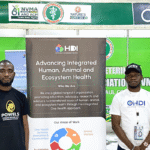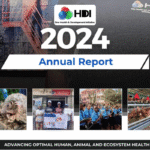Schistosomiasis is a key public health issue and health challenge, yet a Neglected Tropical Disease. This disease is caused by parasitic worms of the genus Schistosoma which are majorly transmitted via freshwater snails. The World Health Organization [WHO] states that 251.4 million people were in need of preventive treatment for schistosomiasis in 2021. Hence, the implementation of effective prevention and control strategies is urgently needed to curb this public health threat.
Nigeria has a high prevalence of schistosomiasis with an estimated 29 million people affected by the disease and over 100 million people (especially women and children) still at risk of infection. This high prevalence has been primarily facilitated by a lack of open-access data on the disease hotspots, thus hindering interventions. Furthermore, schistosomiasis control in Nigeria has been largely dependent on mass drug administration which has proven inefficient.
In response, using the One Health approach, we conducted a situational analysis of schistosomiasis in South-west Nigeria. It identified hotspots of schistosomiasis, peculiar environmental health risks and WASH-related factors that drive the continuous prevalence of schistosomiasis in affected communities, intermediate snail-host-related risk factors that perpetuate the existence and prevalence of schistosomiasis, and the context within which schistosomiasis happens. Our research was conducted in 6 states in Southwest, Nigeria including Lagos State, Ogun State, Osun State, Oyo State, Ondo State, and Ekiti State.
Our report showed that the prevalence of schistosomiasis ranges from 3.2% to 80% and despite awareness efforts, misinformation about schistosomiasis persists in several communities, including communities in urban states such as Lagos and Oyo states. Aside from this, several risk factors including WASH-related ones, environmental risk factors, and plausible zoonotic transmission were identified in these communities. Schistosomiasis persists in Southwestern Nigeria and is a multifaceted public health threat. Therefore, the adoption of the One Health approach to address it gives much promise toward effective control and prevention.
For comprehensive details of our research findings, find the full technical report publication above.











